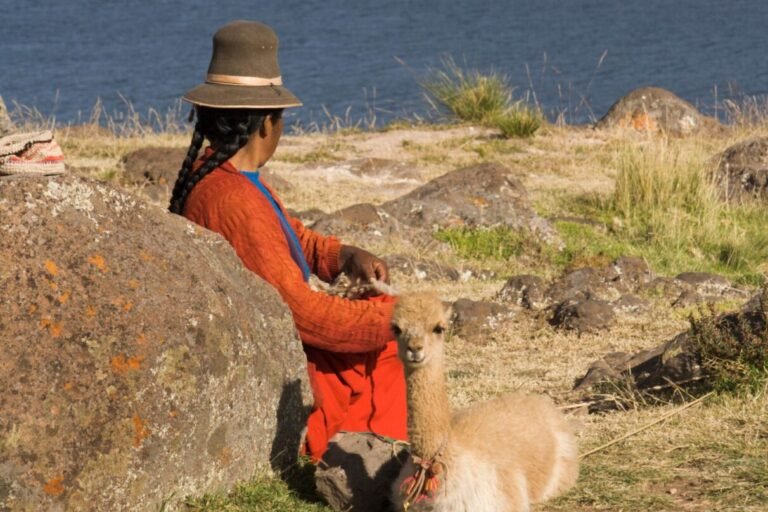
[ad_1]
A prominent player in the “old money” and “quiet luxury” aesthetic, the luxury brand Loro Piana, is under scrutiny for allegedly exploiting Indigenous people of the Peruvian Andes that supply the earth’s most expensive natural fiber.
A Bloomberg report by Marcelo Rochabrú revealed that the luxury fashion house is using unpaid labor to produce vicuña sweaters that retail for approximately $9,000. The Indigenous community of Lucanas that supplies the wool receives only $280 for the equivalent amount of fiber, leaving laborers that herd and shear the wool to work for free.
In an additional Bloomberg Original video, Rochabrún describes vicuñas, who are camelids that are native to the Andes of Peru, as having the finest, rarest, and most expensive wool in the world. They are the smallest of camelids and relatives of llamas.
While the trade of vicuña wool was outlawed in 1969, an international treaty reinstated a legal market, so long as the income derived from the fiber would directly benefit the Indigenous Andes community. However, a 2018 survey found that 80% of those living in the Indigenous community said that they did not benefit from participation in the trade and their living conditions are not improving.
Loro Piana is owned by LVMH, and the CEO, Bernard Arnault is worth $202 billion, according to the Bloomberg Billionaires Index.
Across social media, users responded to the alleged exploitative business practices by the luxury fashion house. Some were asking for Loro Piana to pay their workers.
Others were calling out the exorbitantly high prices in comparison to how much they pay for labor.
And others were calling it “slave labor.”
On Tuesday (March 19), Rochabrún shared that Peruvian Congressman Robert Garcia sent a letter to Loro Piana that included questions about their practices and wished to address the concerns for the “Andean population.”
According to Bloomberg, Loro Piana has finally responded to the allegations and controversy. They were noted as saying: “We have also increased our investments in irrigation, education, and infrastructures in Peru over the past years, and we are committed to dedicating additional resources to benefit local populations going forward.”
[ad_2]
Source link